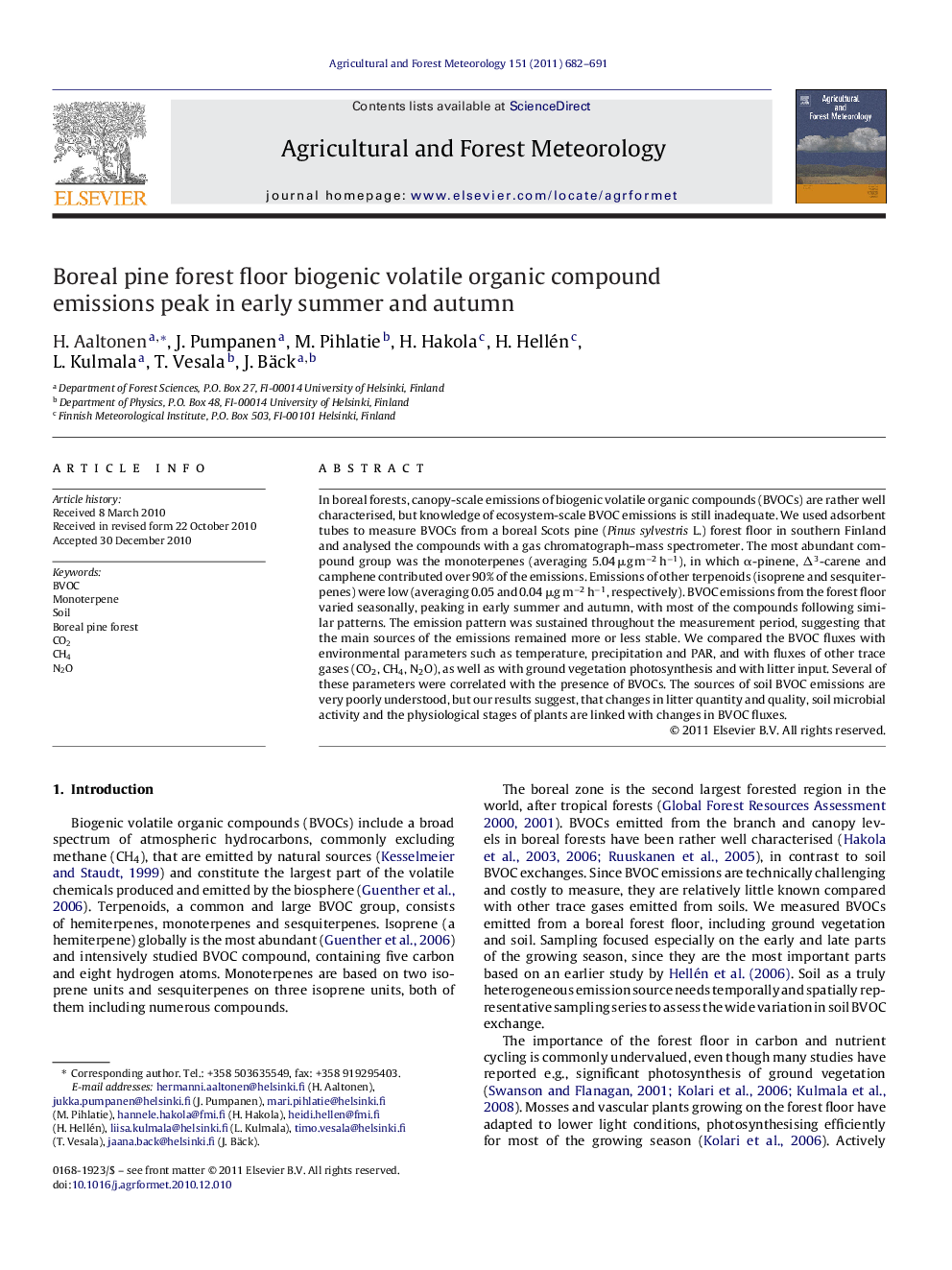| کد مقاله | کد نشریه | سال انتشار | مقاله انگلیسی | نسخه تمام متن |
|---|---|---|---|---|
| 82152 | 158376 | 2011 | 10 صفحه PDF | دانلود رایگان |

In boreal forests, canopy-scale emissions of biogenic volatile organic compounds (BVOCs) are rather well characterised, but knowledge of ecosystem-scale BVOC emissions is still inadequate. We used adsorbent tubes to measure BVOCs from a boreal Scots pine (Pinus sylvestris L.) forest floor in southern Finland and analysed the compounds with a gas chromatograph–mass spectrometer. The most abundant compound group was the monoterpenes (averaging 5.04 μg m−2 h−1), in which α-pinene, Δ3-carene and camphene contributed over 90% of the emissions. Emissions of other terpenoids (isoprene and sesquiterpenes) were low (averaging 0.05 and 0.04 μg m−2 h−1, respectively). BVOC emissions from the forest floor varied seasonally, peaking in early summer and autumn, with most of the compounds following similar patterns. The emission pattern was sustained throughout the measurement period, suggesting that the main sources of the emissions remained more or less stable. We compared the BVOC fluxes with environmental parameters such as temperature, precipitation and PAR, and with fluxes of other trace gases (CO2, CH4, N2O), as well as with ground vegetation photosynthesis and with litter input. Several of these parameters were correlated with the presence of BVOCs. The sources of soil BVOC emissions are very poorly understood, but our results suggest, that changes in litter quantity and quality, soil microbial activity and the physiological stages of plants are linked with changes in BVOC fluxes.
Research highlights
► The boreal forest floor showed the clear emissions of BVOCs.
► Monoterpenes were the most emitted group, sesquiterpene emissions being minor.
► The fluxes of most terpenoids peaked in early summer and autumn.
► Association of BVOC fluxes with soil physical factors and trace gas emissions were weak.
Journal: Agricultural and Forest Meteorology - Volume 151, Issue 6, 15 June 2011, Pages 682–691